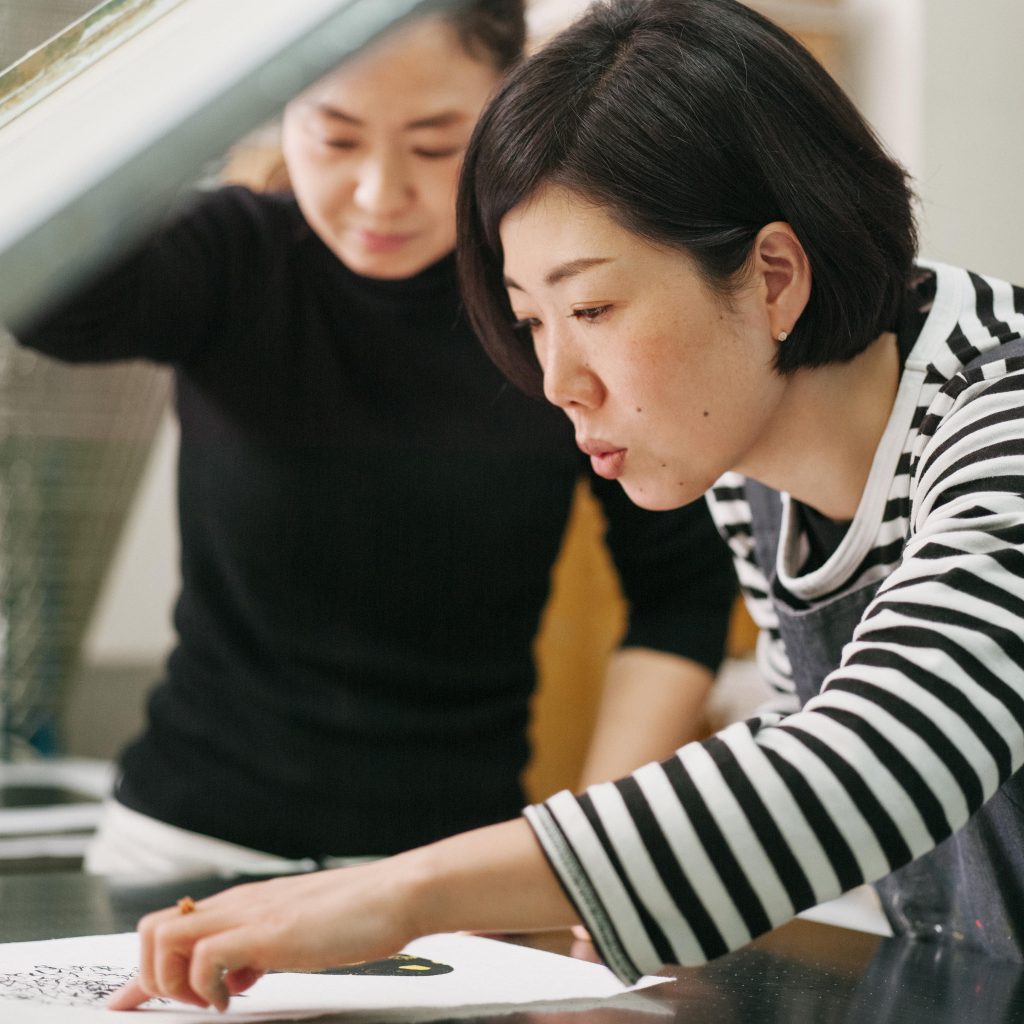
Mocchi Mocchi has long been an inspiration to our designers. Their mix of modern and traditional aesthetic and their use and love of animals, landscapes and nature is very similar to the things we are often inspired by, no matter what destination we are in. When we learned we’d be traveling to Japan for our Fall 2016 collection, we knew we had to get in contact with these lovely sisters, Sachiko and Junko. Not only did we have a chance to interview them, but we also had the opportunity to collaborate on a very special graphic tee. Learn more about Mocchi Mocchi and see the style we collaborated with them on!
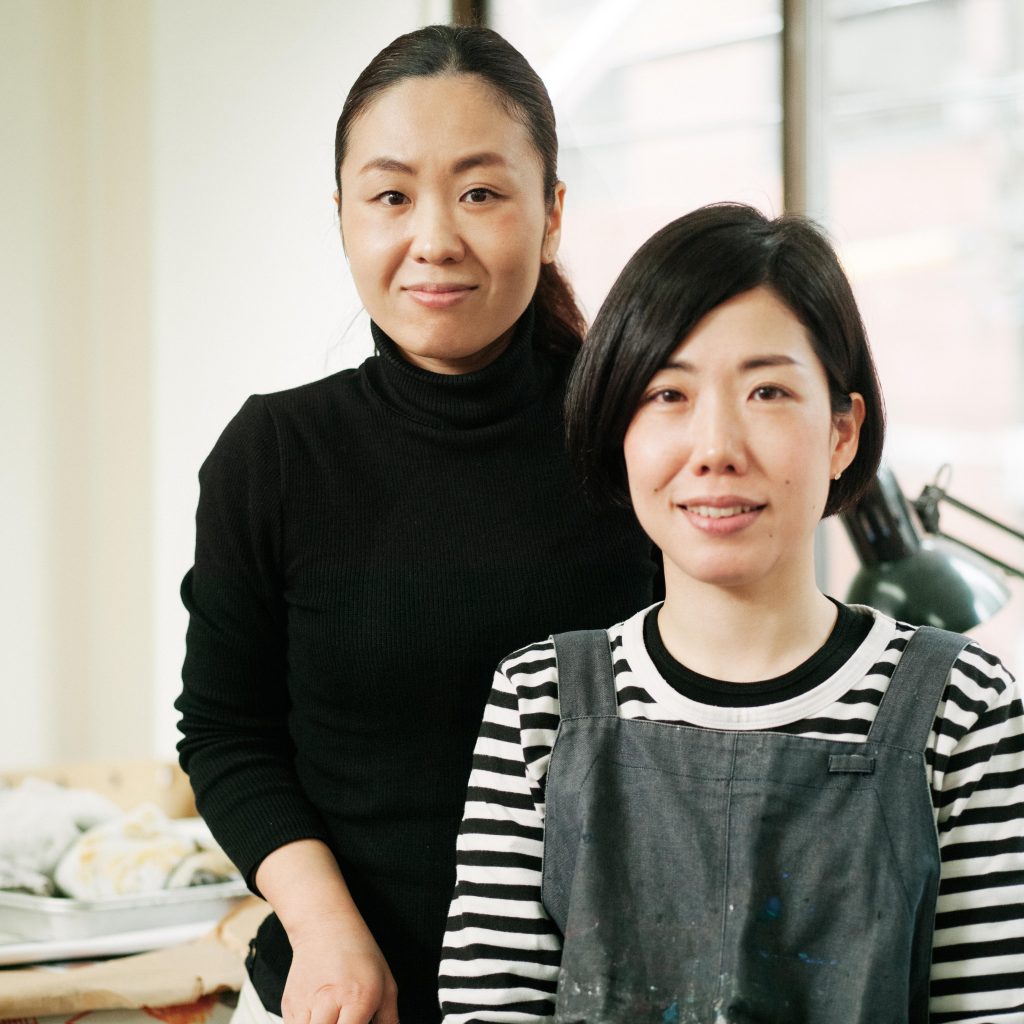
Where do you live?
We both live in Osaka. 二人とも大阪府在住です。
Where is your favorite place in Japan?
Sachiko: I like the area around Nagano prefecture and Yamanashi prefecture. I like the natural and relaxing atmosphere. Also, Nagasaki prefecture is my favorite. The Nagasaki Prefectural Museum of Art located near the harbor is amazing. 佐知子:長野県や山梨県辺り。のんȀりとした自然の空気感が好きです。長崎も好き です。港に近い場所にある長崎県立美術館は、すごく素敵です。
Junko: I like Nagano prefecture in Shinshu area. Time goes calmly there, and there are many museums. I feel people living there are warmhearted. 純子:信州の長野県が好きです。時間が穏やかで美術館が多くあり、そこに住む人が 皆暖かいのです。
What place would you most like to visit in the world and why?
Sachiko: Glencoe in Scotland. I have seen a photo of the beautiful scenery of Glencoe. A road goes further in the valley between mountains towering on either side. It looks beautiful and rustic. Since I saw the photo, I have really wanted to visit there! 佐知子:イギリスのGlencoe。両側にそȀえ立つ山の間の谷に1本の道がずーっと続 いているGlencoe の景色を写真でみたことがありその素朴な美しさに、是非訪れた い!と思いました。
Junko: Madagascar. I want to have a look at a real baobab tree. 純子:マダガスカル島。バオバブの木を実際に見てみたいから。
Did you always want to be an artist?
Sachiko: Actually I started thinking about becoming an artist after graduating from university. 佐知子:創ることを仕事にしたいと考えたのは、大学卒業後。
Junko: No. It was very natural. When I realized, I had already started creating works. 純子:いいえ。気がついたら、なってました。
When you were a kid, what was your favorite art project?
Sachiko: I loved drawing and coloring. There is a custom of sending greeting cards over the New Years holiday in Japan. I always tried to send these cards with some my original ideas in them. 佐知子:お絵描き、塗り絵。日本には年賀状を送るという風習があり、そこにいつも 自分なりの工夫をして描いたハガキを送っていたように思います。
Junko: I think I enjoyed drawing and colored pencil painting, I think that most of Japanese children experience and like them. Also I remember that I drew down the cartoon copies. 純子:日本の子供は誰でもが通る道、お絵描き、色鉛筆塗りだったと思います。漫画 を書き写したりもした思い出があります。
What first got you interesting in screen printing?
Sachiko: When I looked at a book of painter Toulouse-Lautrec, I got a great interest in the lithograph printmaking. Then we reached the silk-screen printmaking as it is relatively easy to produce what we want by ourselves. At the very beginning, we began to create a work by using a simple silk printmaking machine called “Print-Gokko” that has already been discontinued. 佐知子:ロートレックの画集を見て、まずはリトグラフという版画に大変興味を持ち ました。その後比較的簡単に自分たちで制作可能な版画として、シルクスクリーン 版画にたどりつきました。 一番最初は、今はもう廃盤になってしまった”プリントごっこ”という簡易式のシル ク版画制作機で作品を創り始めました。
Junko: It was an old postcard book that my sister showed me. It was kept long time and it was a beautiful book. We decided to create these kinds of postcards that make people feel warm. This is our starting point. 純子:姉から、見せられた古い絵はがきの本だったと思います。何年も前のもので、 暖かみがありました。そういったずっと持っていたいと思える、暖かみのある雰囲 気の絵はがきを創ろうと、二人で創りだしたのが活動のきっかけでした。
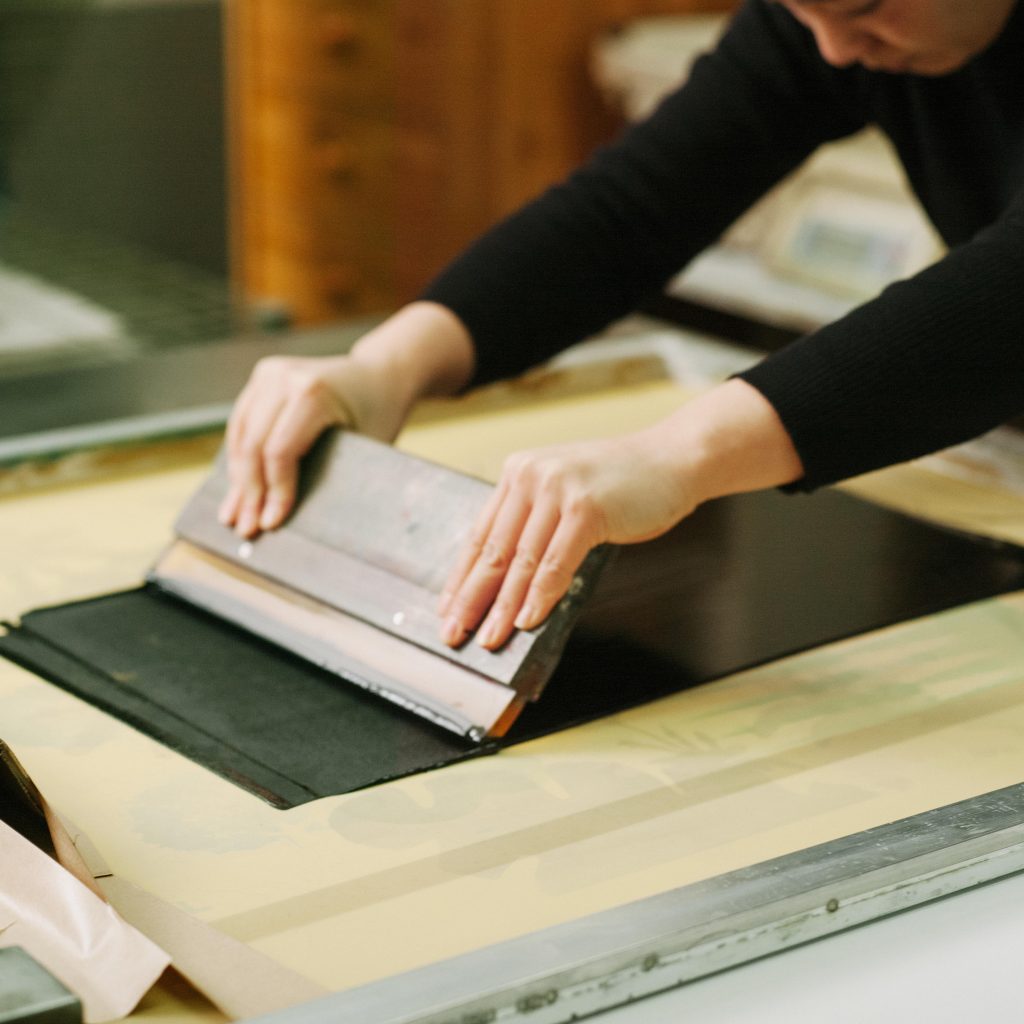
How did you learn your craft?
Sachiko: We printed original postcards by using the Print-Gokko and sold them to a lot of shops. While we were doing this, we were offered to have an exhibition, and then we really wanted to make a large-size work. As a result of researching, fortunately we could meet a professional printer Seiji Imaizumi. We learned everything from him. 佐知子:妹と2人で、プリントごっこを使って、オリジナルのポストカードを刷り、 いろいろな店に販売しました。 そんな活動のなか、展示会のお話を頂き、大きな作品を創りたいと探し求めた結果、 幸運にも今泉浄治というプロのプリンターに出会う事ができ、彼から全てを教わり ました。
How are you passing on your craft to younger generations?
Sachiko: First of all, I would like people to have interest through our works. We are planning to have workshops in our studio for those who want to learn printing and make an opportunity to let a lot of people to know the splendor of the printing. And I also think of challenging not only the silk-screen printing, but also copperplate printing in the future. 佐知子:まずは、作品を通して、興味を持ってもらう事が出来たらと思う。 今後、工房で版画に興味をもって学Ȁたいと言う人にワークショップなどを開き、 さまざまな人に版画を知ってもらう機会を創ろうと考えています。 そして、私自身(佐知子)も、シルクスクリーンだけでなく、銅版にも挑戦しよう と考えています。
Where do you find your inspiration?
Sachiko: I start imagining from texture, facial expressions, ambiguous images, and then I narrow them down to a work with a specific shape. 佐知子:テキスチャー、表情、曖昧なイメージから、想像し、具体的なカタチのある 作品に落とし込んでいきます。
Junko: I get inspirations from everyday life, such as flowers at roadsides and garden plants during walks, and also from illustrated books, etc. The process is like… making their impressions change into the original shapes and expressions through our inspirations. 純子:散歩中、道路脇の草花や民家の植木、図鑑の写真などから受けた、描きたいモ チーフそのものらしい表情を想像しています。 そのものの印象を自分たちを通してオリジナルのカタチや表情に置き直す作業の ようなかんじでしょうか。
What do you most love about traditional Japanese art/craft? What do you most love about modern Japanese art/craft?
Sachiko: Traditional Japanese art/craft : Shiko Munakata (woodblock artist), Gaku Onogi (woodblock artist, picture book writer) Modern Japanese art/craft : Samiro Yunoki (staining artist), Hideki Maekawa 佐知子:昔/棟方志功(木版画家)、小野木 学(木版、絵本作家)、モダン/柚木沙 弥郎(染色家)前川秀樹
Junko: Traditional Japanese art/craft : Shiko Munakata (woodblock artist), Jiro Takidaira (woodblock artist, cutting picture book writer) Modern Japanese art/craft : Yayoi Kusama 純子:昔/棟方志功(木版画家)、滝平二郎(木版、切り絵作家)、モダン/草間弥生
Do you have any other favorite artists or crafters in Japan?
Sachiko: Yasuo Kawase (picture book writer), Ichito Kojima (photographer) 佐知子:瀬川康男(絵本作家)小島一郎(写真家)
Junko: Naoya Hatakeyama (photographer) 純子:好きな作家さんとして、畠山直哉(写真家)
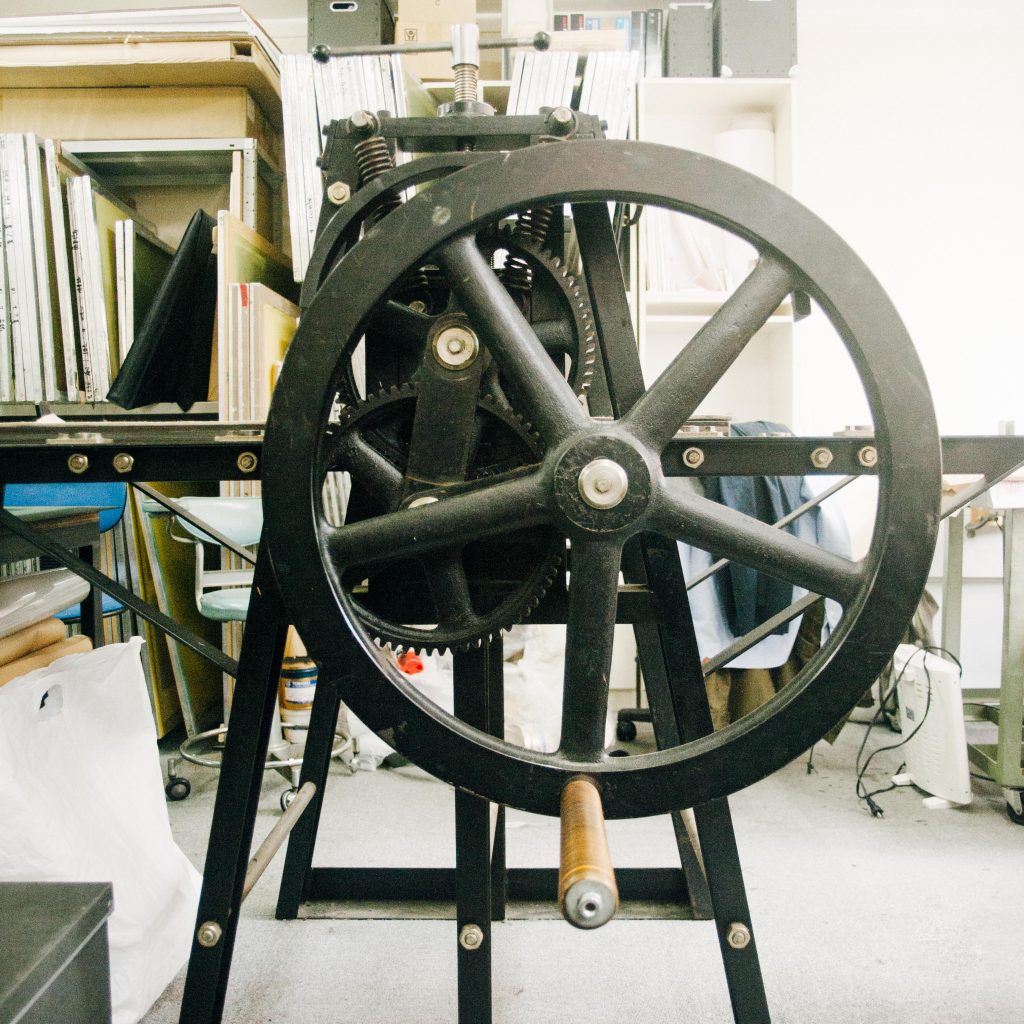
What does Mocchi Mocchi mean and how did that come to be your name?
Sachiko & Junko: Our family name is Mochizuki, and we both were called “mocchi” as a nickname since we were students. So, with two of us, it becomes “moccchi mocchi”. 私達の名字は望月(もちづき)で、ふたりとも学生時代から「もっち」があだなで したので、ふたりで mocchi mocchi です。
What’s the best part about working together as sisters? (And what is the hardest part?)
Sachiko: We can feel free to talk in the real intention. This is good and sometimes it’s bad… 佐知子:本音でぶつかり合えるところ。良くも悪くも。
Junko: I think the best part is that I can express all of myself from my heart. As we show our thoughts and feelings frankly each other in order to decide the directions, we often have fights. However, we (only me?) get back to normal next day. As personally I am such a person who wants to have a clear border between work and the others, I sometimes feel difficult that there is no border between them as we see each other not only for work but also for outside of work. I sometimes feel it’s difficult when we become too close. 純子:良いところは心のうちを全て出せる事かと思います。考え方、感じ方、をさら けだし、方向性を決めるので、それでけんかになる事もしばしばなのですが、次の 日には元通り(私だけ?)です。ただ、仕事以外も顔を合わすので、仕事もオフも ないところは切り替えが欲しい私にとって難しかったです。 姉妹として近くなりすぎて、言葉がなかなか届かなくなる部分などは、ハード?と いうか難しい部分でした。
What is your typical workday like?
Sachiko: It depends on our feelings. For example, I sometimes begin with sketching or browsing references and photographs of the objects or art books of artists who I’m interested in. 佐知子: 日によって、その日の気分によって変わります。 クロッキーをして手を動かすことから始まるときもあれば、モチーフの資料、写真 などを眺めたり、気になる作家の画集を眺めてから作業したり。
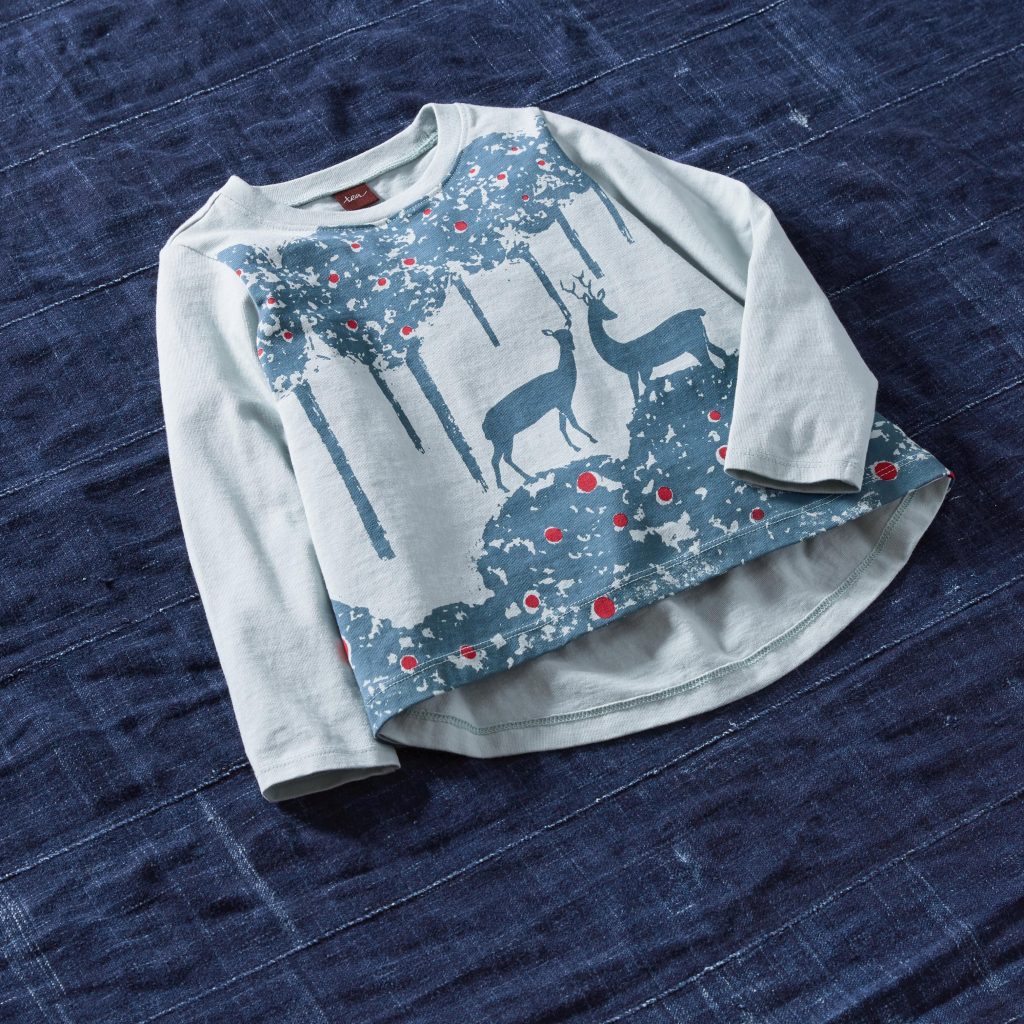
How much time do you spend on each piece?
Sachiko & Junko: It depends on the size and the numbers of colors. We don’t prefer to use a lot of colors, however, we need to have several printing plates in order to express the strength even for one black color. For example, we used 10 printing plates for a piece with only black and gold colors. This increased the process a lot and it took a long time to complete. In order to understand properly what we want to create each other, we visualize the image of the finished piece on the computer at the beginning. This process is very important and takes a lot of time. It would take at least 3 days. When it gets longer and we can’t decide, we sometimes interrupt the process. (as we need to keep ourselves presence of mind) After we decide the image of the finished piece, we start making the required texture. And we make printing plates and then proceed the process to the test printing etc. While printing a piece with several printing plates, we repeat trial and error, and complete the piece. Then, finally we print the editions. In total, it takes at least about 10 days to complete one work. 作品の大きさと、色数にも依ります。 私達はあまりたくさんの色を使う事を好みませんでしたが、同じくブラックでも何 版か重ねて強さを出したりして刷るという工程をとったりもしたので 黒と金のみの色を使う絵でも10版くらいに分けて刷るとそれだけ工程が増えるた め長くかかったりもしました。 創りたい作品のイメージをお互いにきちんと理解出来るようにまずパソコンなど の画像で視覚化し、出来上がりのイメージを創り上げます。 この作業がとても大事なので、ここはかなり時間がかかります。早いときは3日く らい。長くなるとなかなか決まらず、ǿどいときは一度中断したりします。(冷静 になる必要があるため。) 出来上がりイメージが決まればまず、必要なテクスチャーを出す作業(版下制作) に入ります。 そこから、版をつくり、試し刷り等の作業に入ります。 版を通して摺ってみて、試行錯誤し、作品が決まればその後エディション刷りにか かるという感じです。 総じて一つの作品にだいたいもっとも早いものでは10日くらい、ですね。
Do you have a signature screen print?
Sachiko: I think our signature screen print is a flower vase. 私たちの代表作は、Flower vaseだと思います。
If a kid is interested in screen printing, how could they get started? Is there an easy do-it-yourself version of screen printing they could try at home?
Sachiko & Junko: They can use an embroidery frame, stockings, masking tapes, acrylic color paints, rubber spatulas. For example, if you want to print a heart shape, put a stocking into an embroidery frame, put tapes or plaster an acrylic color paint onto the other part of the heart shape on the frame. In other words, you seal up the other part of the heart shape with tape or an acrylic color paint in order not to let an ink leak out from the other part of the heart shape. Then, place the embroidery frame with the stoking on a piece of paper, put an ink on the frame and push the ink out by using something like a stiff card (or a rubber spatula). Finally, you can print the shape of a heart. 刺繍枠、ストッキング、マスキングテープ、アクリル絵の具、ゴムベラ。 例えば、ハートのカタチを摺りたいなら、刺繍枠にストッキングを張り込み、ハー トのカタチ(摺りたい図柄)以外のところをテープか、アクリル絵の具で描き乾か して止めてしまう。 つまり、ハートのカタチ以外はストッキングの編み目からインクが漏れない用に止 めてしまいます。紙、刺繍枠(ストッキングを張った)の準番に置き、その上にイ ンクを載せて、固いカードのようなもの(ゴムベラでもいい)で、インクを押し出 す。そうすると、ハートのかたちが刷り上がります。
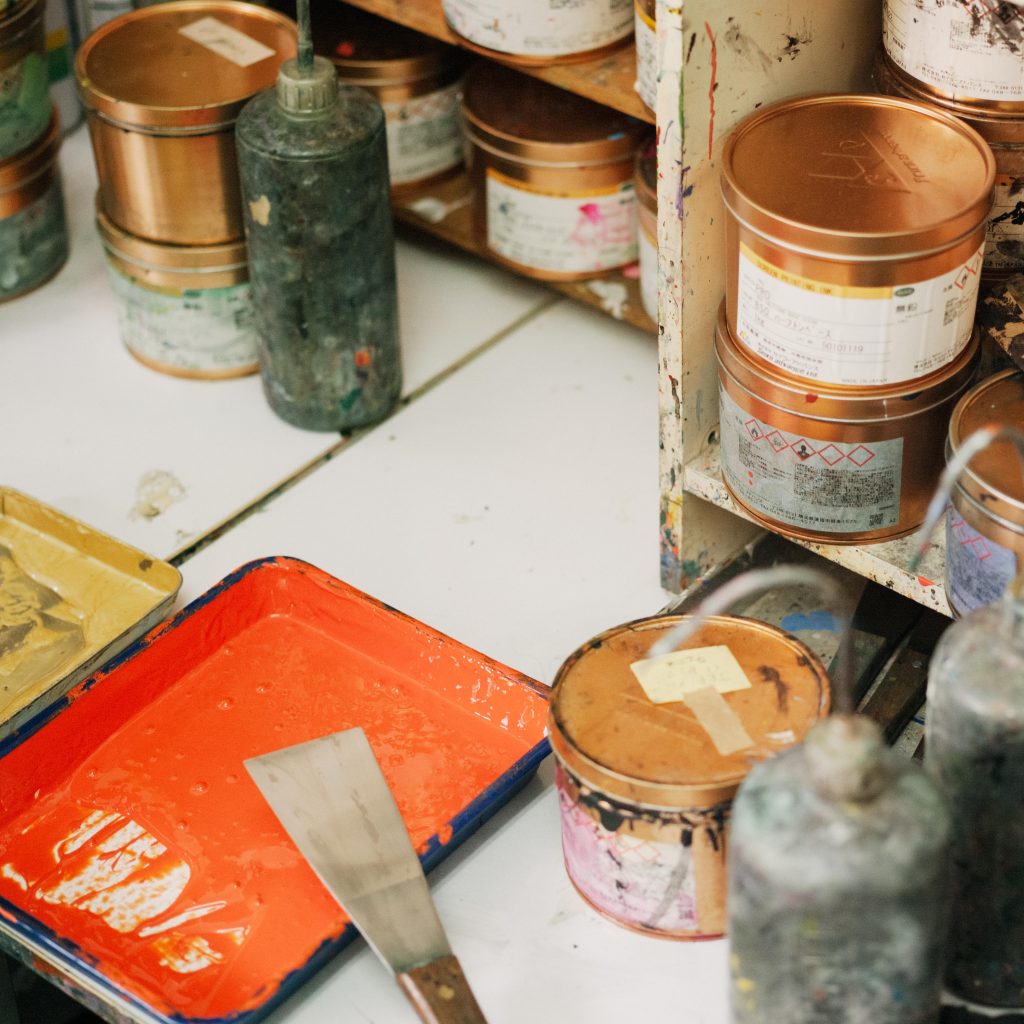
If people want to learn more about you and your work or purchase work how can they get in touch with you?
Sachiko & Junko: Well, first you should know, we will start working individually from now on. Sachiko will carry on the lithograph and Junko will go to a school to learn the three-dimensional sculpture. So, we don’t have a plan to produce works together. We would like to announce our activities gradually at the website. A lot of things are not decided yet at the moment. With regards to our works, it is possible to sell the ones in stock. It is possible to send them to abroad if the postage is covered. Please feel free to contact us by email if you have any questions. 実は今後、おのおの個人での制作活動に移行いたします。姉は引き続き版画を、妹 は立体彫刻を学ぶ為に学校へ行く予定です。 ですので今後二人で作品を制作する予定はないんです。ゆっくりとはなりますが、 またホームページ上にはおのおのの活動など、お知らせしていければとは考えてい るのですが、まだ色々未定でして。 作品については、今持っている作品でしたら、在庫があるうちは販売可能です。送 料をご負担いただく必要がありますが海外発送は可能です。一度メールにてご連絡 頂ければと思います。
To learn more or purchase Mocchi Mocchi prints, head on over to their website.











